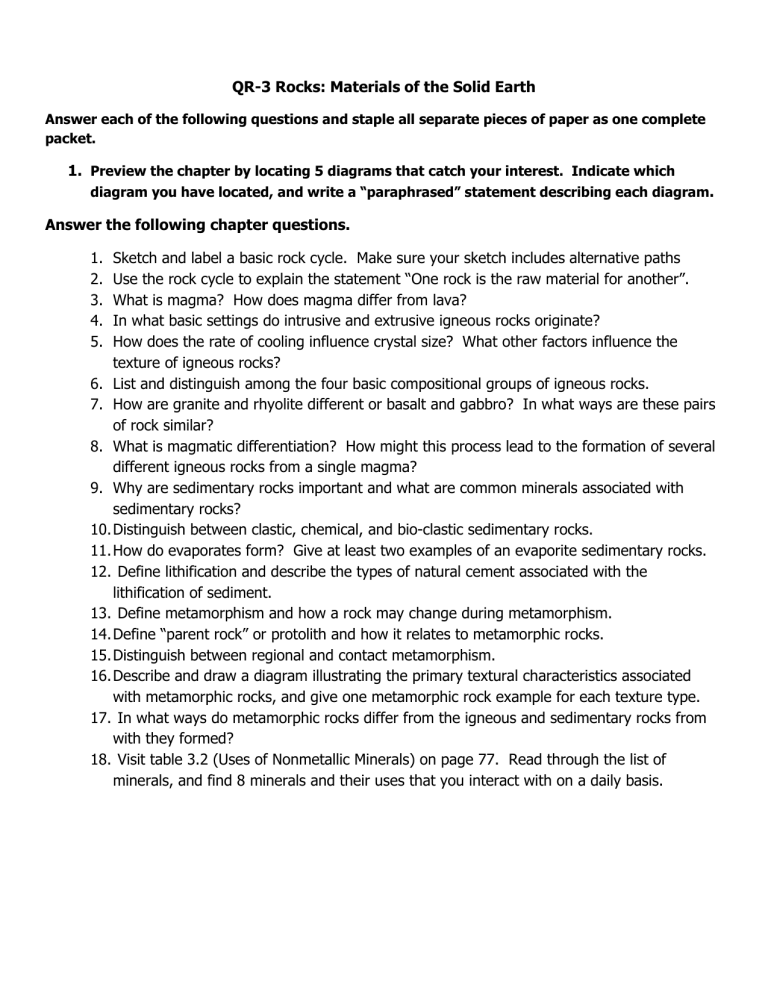QR-3 Rocks: Materials of the Solid Earth Answer each of the

QR-3 Rocks: Materials of the Solid Earth
Answer each of the following questions and staple all separate pieces of paper as one complete packet.
1.
Preview the chapter by locating 5 diagrams that catch your interest. Indicate which diagram you have located, and write a “paraphrased” statement describing each diagram .
Answer the following chapter questions.
1.
Sketch and label a basic rock cycle. Make sure your sketch includes alternative paths
2.
Use the rock cycle to explain the statement “One rock is the raw material for another”.
3.
What is magma? How does magma differ from lava?
4.
In what basic settings do intrusive and extrusive igneous rocks originate?
5.
How does the rate of cooling influence crystal size? What other factors influence the texture of igneous rocks?
6.
List and distinguish among the four basic compositional groups of igneous rocks.
7.
How are granite and rhyolite different or basalt and gabbro? In what ways are these pairs of rock similar?
8.
What is magmatic differentiation? How might this process lead to the formation of several different igneous rocks from a single magma?
9.
Why are sedimentary rocks important and what are common minerals associated with sedimentary rocks?
10.
Distinguish between clastic, chemical, and bio-clastic sedimentary rocks.
11.
How do evaporates form? Give at least two examples of an evaporite sedimentary rocks.
12.
Define lithification and describe the types of natural cement associated with the lithification of sediment.
13.
Define metamorphism and how a rock may change during metamorphism.
14.
Define “parent rock” or protolith and how it relates to metamorphic rocks.
15.
Distinguish between regional and contact metamorphism.
16.
Describe and draw a diagram illustrating the primary textural characteristics associated with metamorphic rocks, and give one metamorphic rock example for each texture type.
17.
In what ways do metamorphic rocks differ from the igneous and sedimentary rocks from with they formed?
18.
Visit table 3.2 (Uses of Nonmetallic Minerals) on page 77. Read through the list of minerals, and find 8 minerals and their uses that you interact with on a daily basis.







